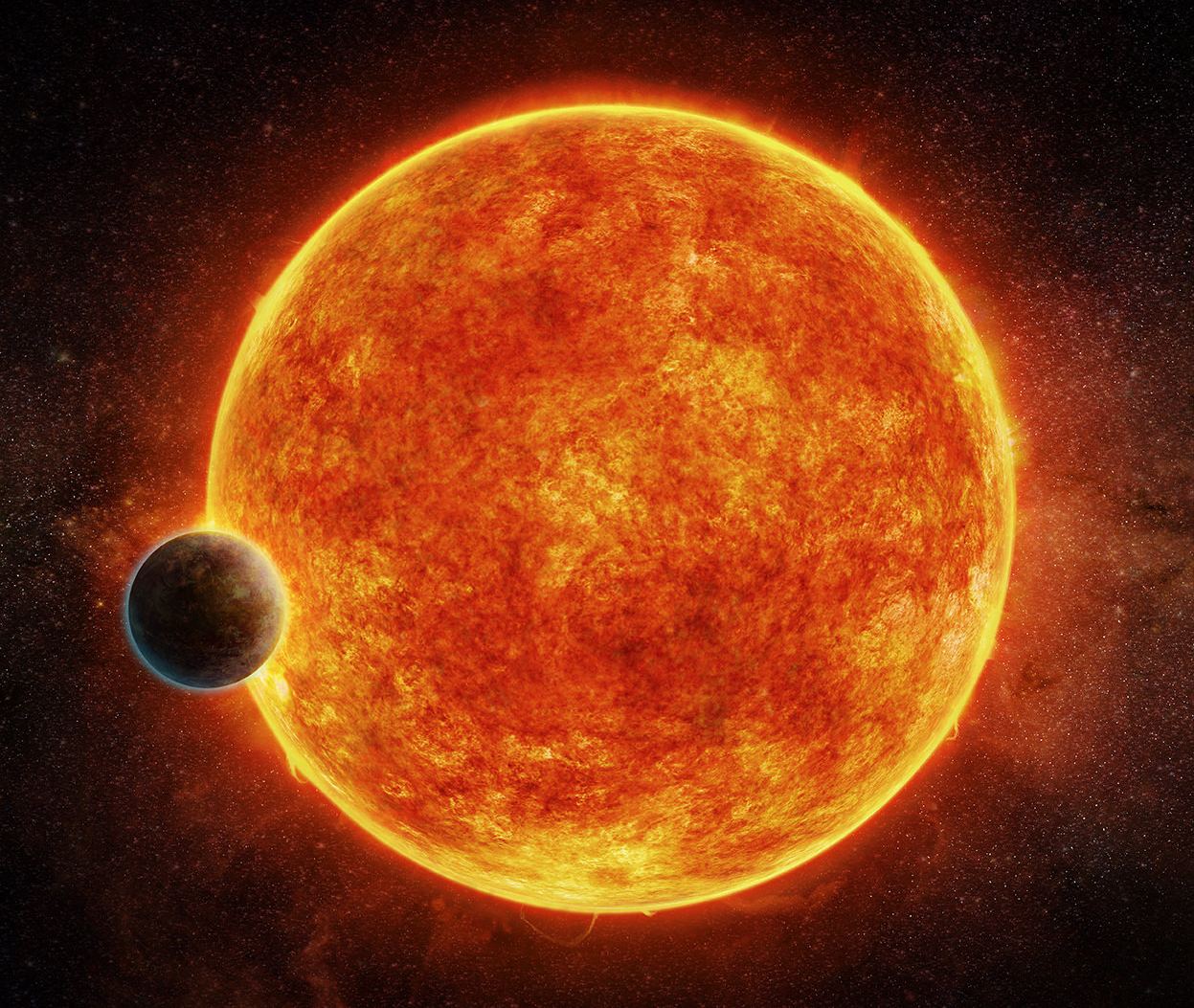It is good time to be an exoplanet hunter... or just an exoplanet enthusiast for that matter! Every few weeks, it seems, new discoveries are being announced which present more exciting opportunities for scientific research. But even more exciting is the fact that every new find increases the likelihood of locating a potentially habitable planet (and hence, life) outside of our Solar System.
And with the discovery of
LHS 1140b
- a super-Earth located approximately 39 light years from Earth - exoplanet hunters think they have found the most likely candidate for habitability to date. Not only does this terrestrial (i.e. rocky) planet orbit within its sun's habitable zone, but examinations of the planet (using the transit method) have revealed that it appears to have a viable atmosphere.
Credit for the discovery goes to a team of international scientists who used the
MEarth-South
telescope array - a robotic observatory located on Cerro Tololo in Chile - to spot the planet. This project monitors the brightness of thousands of red dwarf stars with the goal of detecting transiting planets. After consulting data obtained by the array, the team noted characteristic dips in the star's brightness that indicated that a planet was passing in front of it.
[caption id="attachment_135138" align="aligncenter" width="580"]
The MEarth-South telescope array, located on Cerro Tololo in Chile, searches for planets by monitoring the brightness of nearby, small stars. Credit: Jonathan Irwin
[/caption]
These findings were then followed up using the
High Accuracy Radial velocity Planet Searcher
(HARPS) instrument at the ESO's
La Silla Observatory
, located on the outskirts of Chile's Atacama Desert. According to the their study - which appeared in the April 20th, 2017, issue of the journal
Nature
- the team was able to make estimates of the planet's age, size, mass, distance from its star, and orbital period.
They estimate that the planet is at least five billion years old - about 500 million years older than Earth. It is also slightly larger than Earth - 1.4 times Earth's diameter - and is considerably more massive, weighing in at a hefty 6.6 Earth masses. Since they were able to view the planet almost edge-on, the team was also able to determine that it orbits its sun at a distance of about 0.1 AU (one-tenth the distance between Earth and the Sun) with a period of 25 days.
However, since its star is a red dwarf, this proximity places it in the middle of the system's habitable zone. But what was most exciting was the fact that the team was able to look for evidence of an atmosphere since the planet was passing in front of its star - something that has not been possible with many exoplanets. Because of this, they were able to conduct transmission spectroscopy measurements that revealed the presence of an atmosphere.
As Jason Dittmann - of the Harvard-Smithsonian Center for Astrophysics (CfA) and the lead author of the study - said in a
CfA press release
:
[caption id="attachment_135139" align="aligncenter" width="580"]
This artist's impression shows the exoplanet LHS 1140b, which orbits a red dwarf star 40 light-years from Earth. Credit: ESO/spaceengine.org
[/caption]
Granted, this exoplanet is not as close as
Proxima b
, which orbits Proxima Centauri - just 4.243 light years away. And it certainly isn't as robust a find as the
TRAPPIST-1
system, with its seven rocky planets, three of which are located within its habitable zone. But compared to these candidates, the researchers were able to place solid constraints on the planet's mass and density, not to mention the fact that they were able to observe an atmosphere.
The discovery of an exoplanet that orbits a red dwarf star and has an atmosphere is also encouraging in a wider context. Low-mass red dwarf stars are the most common star in the galaxy, accounting for
75% of stars
in our cosmic neighborhood alone. They are also long-lived (up to 10 trillion years), and recent research indicates that they are capable of
hosting large numbers of planets
.
But given their variability and unstable nature, astronomers have expressed doubts as to whether or not planet orbiting them could retain their atmospheres for very long. Knowing that a terrestrial planet that orbits a red dwarf, is five billion years old, and still has an atmosphere is therefore a very good sign. But of course, simply knowing there is an atmosphere doesn't mean that it is conducive to life as we know it.
"Right now we're just making educated guesses about the content of this planet's atmosphere," said Dittman. "Future observations might enable us to detect the atmosphere of a potentially habitable planet for the first time. We plan to search for water, and ultimately molecular oxygen."
[caption id="attachment_135141" align="aligncenter" width="580"]
This chart shows the location of the faint red star LHS 1140 in the faint constellation of Cetus (The Sea Monster). This star is orbited by a super-Earth exoplanet called LHS 1140b, which may be best place to look for signs of life beyond the Solar System. The star is too faint to be seen in a small telescope.[/caption]
Hence, additional studies will be needed before this planet can claim the title of "best place to look for signs of life beyond the Solar System". To that end, future space-based missions like the
James Webb Space Telescope
(which will launch in 2018), and ground-based instruments like the
Giant Magellan Telescope
and the ESO's
Extremely Large Telescope
, will be especially well-suited!
In the meantime, the NASA/ESA Hubble Space Telescope will be conducting observations of the star system in the near future. These observations, it is hoped, will indicate exactly how much high-energy radiation LHS 1140b receives from its sun. This too will go a long way towards determining just how habitable the Super-Earth is.
And be sure to enjoy this video of the LHS 1140 star system, courtesy of the European Southern Observatory and spaceengine.org:
 Universe Today
Universe Today
